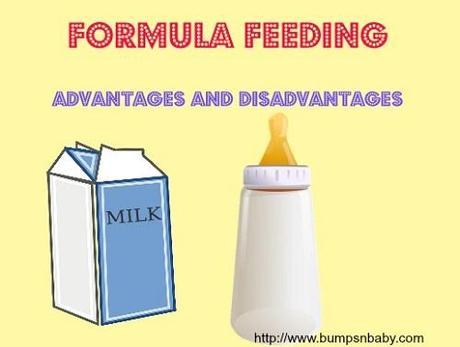
In today’s post we talk about the formula feeding advantages and disadvantages as a mother you ought to know.
Breastfeeding is considered the best nutritional option for babies by the major medical organizations, but not every mother can breastfeed.
Commercially prepared infant formulas are a nutritious alternative to breast milk. They contain some vitamins and nutrients that breastfed babies need to get from supplements.
Advantages of Formula Feeding Over Breastfeeding:
- Either parent (or another caregiver) can feed the baby a bottle at any time (although this is also true for women who pump their breast milk).
- There’s no need to pump or to schedule work or other obligations and activities around the baby’s feeding schedule.
- Formula-feeding moms don’t need to find a private place to nurse in public.
- Formula is less digestible than breast milk. Hence formula-fed babies usually need to eat less often than breastfed babies.
- Women who opt to formula feed don’t have to worry about the things they eat or drink that could affect their babies.
Disadvantages of Formula Feeding over Breastfeeding:
As with breastfeeding, there are some challenges to consider when deciding whether to formula feed.
- If mom is out and about with baby, she will need to bring supplies for making bottles.
- None of the antibodies found in breast milk are found in manufactured formula
- Formula doesn’t provide baby the added protection against infection and illness that breast milk does.
- Formula can be costly. Powdered formula is the least expensive, followed by concentrated, with ready-to-feed being the most expensive.
- Formula-fed babies may have more gas and firmer bowel movements than breastfed babies. Read how asafoetida helped my daughter to relieve her off gas?
Preparing Formula Milk:
Prepare your baby’s formula by mixing water and the appropriate amount of powdered infant formula.
The packaging on the side of the formula container will tell you how much to use. Carefully follow the directions.
You can use filtered tap water, as long as your local or state health departments have labeled it as safe to drink.
Test to see if the water is cool enough for your baby to drink by shaking a few drops of water on the inside of your wrist. If it stings, it’s still too hot.
- How I weaned my toddler from breastfeeding completely?
- All you need to know about expressing, storing and feeding expressed milk
- Pigeon disposable breast pads review
- Medela mini electric breast pump review
Once water has cooled, don’t let it sit longer than 30 minutes before adding it to the formula.
Once prepared, the formula is ready to feed to your baby immediately without additional refrigeration or warming.
Formula that’s been prepared should be consumed or stored in the refrigerator within 1 hour. If it has been at room temperature for more than 1 hour, throw it away.
And if your baby doesn’t drink all the formula in the bottle, throw away the unused portion — never save it for later.
Preparing Formula in Advance and Storage:
Formula may be prepared ahead of time (for up to 24 hours) if you store it in the refrigerator to prevent the formation of bacteria.
Open containers of ready-made formula, concentrated formula, and formula prepared from concentrate also can be stored safely in the refrigerator for up to 48 hours.
Whatever nutritional option you choose, be sure to talk to your doctor about the choices available to help you make the decision that’s best for both you and your baby.
Hope this post was able to give you a fair idea on the advantages and disadvantages of formula feeding.
Please share this article in your Facebook and twitter profiles.
Please subscribe to the newsletters of Bumps n Baby to stay updated.






